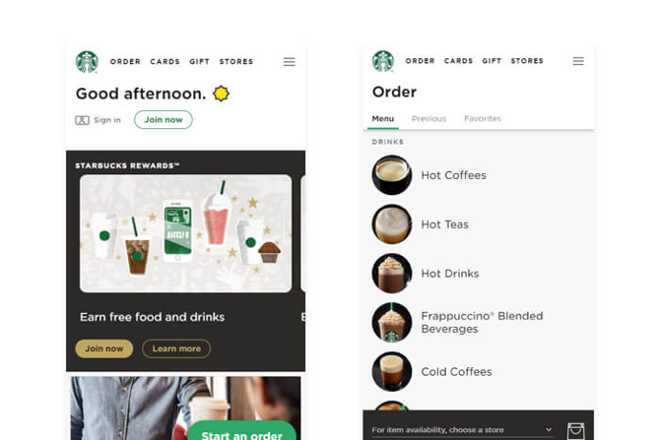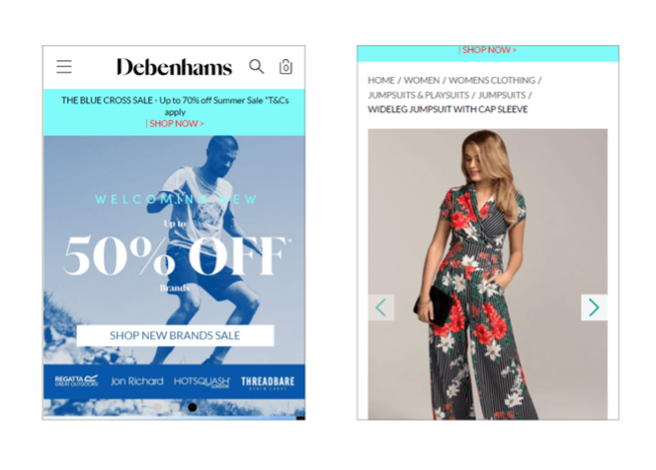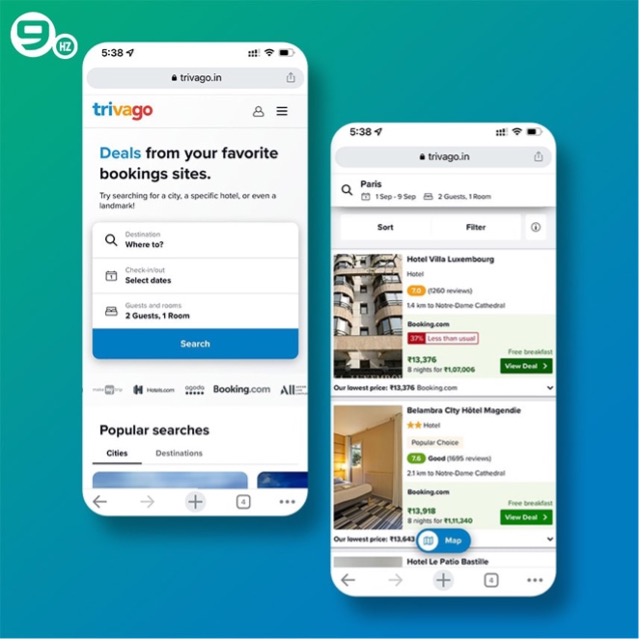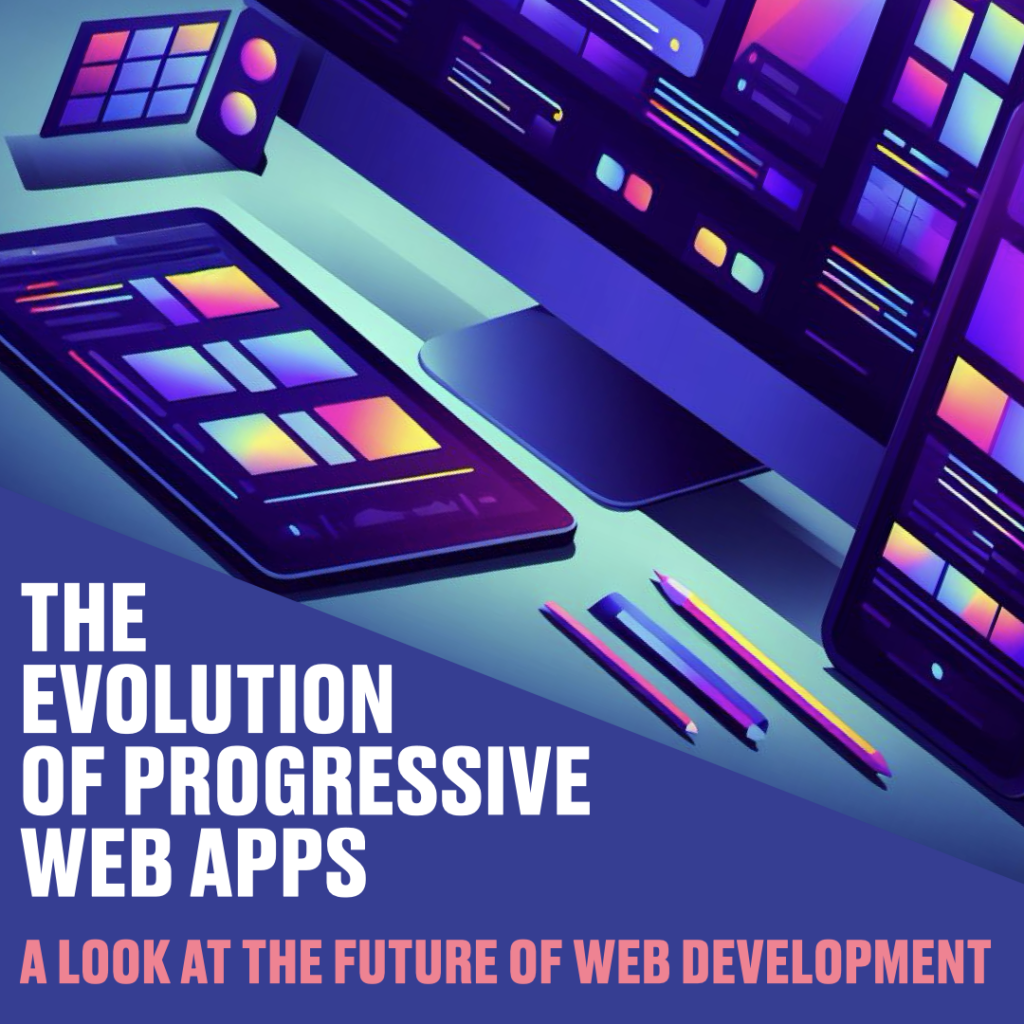Progressive Web Apps (PWAs) have revolutionized how we interact with websites and applications on our mobile devices. These web applications combine the best features of both websites and native mobile apps, providing users with a seamless and engaging experience.
What are Progressive Web Apps?
Progressive web apps are web applications that use modern web capabilities to deliver an app-like experience to users. They are built using web technologies such as HTML, CSS, and JavaScript and are designed to work on any device with a modern web browser.
PWAs are designed to be fast, reliable, and engaging, providing users with a seamless experience similar to a native app. They can be accessed through a URL and do not require installation from an app store, making them easily discoverable and accessible.
The Rise of Progressive Web Apps.
The Rise of Progressive Web Applications (PWAs) can be attributed to various factors, including the significant role played by Google in promoting and advocating for their development. Through multiple initiatives, Google has actively encouraged the adoption and implementation of PWAs among developers and businesses. With their extensive reach and influence, Google has been instrumental in raising awareness about the potential of PWAs to bridge the gap between native apps and traditional websites, providing enhanced user experiences and improved performance.
Moreover, major companies and organizations’ widespread adoption of PWAs has increased in popularity. Recognizing the unique advantages that PWAs offer, leading industry players have embraced this technology and successfully integrated it into their digital strategies. Companies such as Twitter, Starbucks, and Alibaba have all witnessed the benefits of PWAs firsthand. By leveraging the increased engagement and conversion rates that PWAs can deliver, these organizations have enhanced their brand presence, maximized user satisfaction, and ultimately drove business growth.

Starbucks: The coffee chain developed a PWA for its online ordering system, which allows customers to browse the menu, customize their orders, and pay with their rewards points even when offline. The PWA is 99.84% smaller than the native app and doubled the number of web users who place orders each day1.

Debenhams: The UK fashion retailer transformed its old website into a PWA to improve its mobile conversion rate. The PWA features a smooth user interface, a fast checkout, and offline access. As a result, Debenhams increased its mobile revenue by 40% and reduced its bounce rate by 20%.

Trivago: The hotel search engine created a PWA to provide a better user experience for travelers who need to find accommodation on the go. The PWA offers offline access, push notifications, and a home screen icon. Trivago saw an increase of 150% in user engagement and 97% in clickouts to hotel offers3.
In addition to the influential role of Google and the adoption by major players, the success stories associated with PWAs have contributed significantly to their rise. Numerous businesses and organizations, from small startups to multinational corporations, have reported remarkable results after implementing PWAs. For instance, Lancôme, a renowned beauty brand, experienced a whopping 36% increase in mobile conversion rates after launching their PWA. Similarly, Flipkart, an Indian e-commerce giant, saw a 70% increase in conversions after switching to a PWA. These success stories demonstrate the tangible benefits of PWAs and inspire other businesses to explore the potential of this technology for themselves.
The Evolution of Progressive Web Apps.
Significant advancements in web technologies have marked the evolution of progressive web apps (PWAs). These advancements have played a crucial role in enhancing the user experience and expanding the capabilities of PWAs. Let’s explore some of the critical improvements that have contributed to the evolution of this technology:
1. Service Workers: Introduced in 2015, service workers are scripts that run in the background of PWAs. They enable PWAs to work offline, send push notifications, and provide a faster and more reliable experience.
2. App Manifest: In 2016, the introduction of the app manifest revolutionized PWAs. This JSON file contains essential information about the PWA, such as its name, icons, and theme color. It allows PWAs to be installed on a user’s device, making them easily accessible and discoverable.
3. App Indexing: Also introduced in 2016, app indexing enables PWAs to be indexed by search engines. This feature significantly improves the discoverability of PWAs through search results, expanding their reach to a broader audience.
4. Web Push Notifications: Another feature introduced in 2016, web push notifications allow PWAs to send notifications to users, even when the PWA is not open. This capability enhances user engagement and retention, enabling businesses to stay connected with their audience.
5. Background Sync: First introduced in 2017, background sync enables PWAs to provide a seamless experience, even in areas with poor internet connectivity. It allows PWAs to synchronize data in the background, ensuring users can access the latest information.
6. Payment Request API: Also introduced in 2017, the API enables PWAs to accept user payments. This feature makes PWAs more convenient for e-commerce businesses, as users can purchase directly within the PWA.
7. Trusted Web Activities: Introduced in 2018, trusted web activities allow PWAs to be launched from a native app. This seamless transition between the two enhances the visibility of PWAs and provides a consistent user experience.
These advancements have propelled the evolution of PWAs, making them more powerful and versatile. With each new feature, PWAs have become capable of delivering enhanced user experiences, bridging the gap between native apps and traditional websites.
Enhanced User Experience.
Enhanced User Experience is achieved through fast loading times and smooth animations. By reducing loading times, users can quickly access the content they desire without experiencing frustrating delays. Additionally, the incorporation of smooth animations adds an extra layer of aesthetic appeal, making the overall browsing experience more visually pleasing and enjoyable for users.
Responsive design is implemented to cater to the diverse range of devices and screen sizes that users may utilize. This ensures that the website or application adapts seamlessly to devices like desktop computers, laptops, tablets, and smartphones. Whether a user is accessing the content on a large desktop monitor or a compact smartphone screen, the responsive design ensures that the experience remains consistent and user-friendly.
Furthermore, to further enhance the user experience, access to device features and sensors is provided. This allows users to fully utilize the capabilities of their devices while interacting with the website or application. For example, suppose a user’s device has a built-in GPS sensor. In that case, the website or application can use this sensor to provide location-based services or customize content based on the user’s location. By offering such access to device features and sensors, the user experience is enhanced, providing a more personalized and interactive browsing experience.
The Impact of Progressive Web Apps.
Progressive Web Apps (PWAs) have marked a significant shift in web development practices and brought about transformative impacts on the digital user experience and business metrics.
Improved Performance and Accessibility.
To enhance the overall user experience, a website can implement various updates that improve performance and accessibility. Firstly, we have optimized the loading speed of our website, allowing for faster loading times and seamless navigation throughout different pages. This ensures that users can access our content easily.
Additionally, we have incorporated offline functionality into our website. This means that users can access certain features and content even when not connected to the internet. Offline functionality provides convenience and flexibility, allowing users to interact with our website and utilize its features in various situations, regardless of internet connectivity.
Furthermore, our website now includes enhanced accessibility features specifically designed to cater to the needs of users with disabilities. By implementing these features, we have made our content more accessible and inclusive for individuals with visual, hearing, or other disabilities. These accessibility features ensure that all users, regardless of their abilities, can easily navigate and engage with our website, ultimately fostering a more inclusive and user-friendly experience for everyone.
Cost and Development Efficiency.
Cost and Development Efficiency: One of the key benefits of using cross-platform development is having a single codebase that can be utilized for multiple platforms. This means that instead of having separate codebases for each platform, developers can write code once and have it work across different platforms, such as iOS, Android, and Windows. With a single codebase, developers can save significant time and effort in coding and maintenance.
Moreover, cross-platform development can also bring lower development and maintenance costs. In traditional development approaches, where separate codebases are needed for each platform, it is expensive as it requires additional resources and time to develop and maintain multiple codebases. However, with cross-platform development, developers can focus on one codebase, reducing the overall development and maintenance costs. This cost-effectiveness can be especially beneficial for small businesses or startups with limited resources.
Furthermore, another advantage of cross-platform development is the ease of updates and bug fixes. Software updates and bug fixes are inevitable in today’s fast-paced technological landscape. With cross-platform development, making updates and implementing bug fixes becomes more streamlined. Instead of addressing multiple codebases, developers can make changes in a single codebase, which will reflect across all platforms. This saves time and ensures uniformity and consistency in the user experience across different platforms.
Businesses can benefit from various cost and development efficiencies by opting for cross-platform development. The ability to have a single codebase for multiple platforms not only saves time and effort but also reduces development and maintenance costs. Additionally, the ease of updates and bug fixes ensures that the software remains up-to-date and bug-free across all platforms. Hence, cross-platform development can be a valuable solution for organizations looking to optimize their resources and maximize efficiency in software development.
Increased User Engagement and Retention.
One way user engagement and retention can be enhanced is by implementing push notifications and background sync. Users can receive timely updates and notifications directly on their devices by utilizing push notifications, keeping them engaged and informed about any important events or updates related to the app or website. In addition, background sync functionality allows for automatic syncing of data and content in the background, ensuring that users have the most up-to-date information available without manually refreshing or updating the app or website.
Another effective method to increase user engagement and retention is incorporating the “add to home screen” functionality. By allowing users to add an app or website shortcut directly to their device’s home screen, it becomes more convenient and accessible for them to engage with the app or website regularly. This added level of accessibility can lead to higher user engagement and retention, as users are more likely to utilize the app or website when it is easily visible and readily accessible on their home screen.
Furthermore, by focusing on improving the overall user experience, businesses can significantly impact user engagement and retention rates. Users with a positive and seamless experience while using an app or website are more likely to stay engaged and continue utilizing the platform. This can be achieved by optimizing the app or website’s loading times, streamlining the user interface and navigation, and incorporating intuitive and user-friendly design elements. An enhanced user experience can increase user engagement and retention and lead to higher conversion rates, as users are more likely to convert into paying customers or active participants in the desired actions or goals of the app or website.
Enhancements in Search Engine Visibility.
One of the main concerns for businesses considering PWAs is the impact on their SEO. However, properly implementing PWAs can improve a website’s SEO.
App Indexing: allows PWAs to be indexed by search engines, making them discoverable through search results. This can help improve a website’s SEO, increasing the chances of the PWA appearing in search results.
Faster Page Load Times: an essential factor in SEO. With PWAs, page load times are significantly reduced, as they are designed to be quick and efficient. This can help improve a website’s SEO, as faster page load times lead to a better user experience and can result in higher search rankings.
Mobile-Friendly Design: With the increasing use of mobile devices, having a mobile-friendly website is crucial for SEO. PWAs are designed to be responsive and work on any device, making them a mobile-friendly business option.
The Future of Progressive Web Apps.
Integration with Native Apps.
Integration with Native Apps One way to achieve seamless integration between Progressive Web Apps (PWAs) and native apps is through hybrid app development frameworks. These frameworks allow developers to build apps that run both on the web and native apps on different platforms, such as iOS and Android. By leveraging this approach, developers can create a unified user experience across other devices and operating systems while still having the flexibility to utilize the unique capabilities and features of native apps.
Another approach to enable the integration of PWAs into native app stores is using Progressive Web App wrappers. These wrappers bridge PWAs and the native app stores, allowing PWAs to be packaged and distributed through the app stores as if they were native apps. This enables users to quickly discover, install, and launch PWAs from their preferred app store, providing a familiar and seamless experience similar to native apps.
When PWAs are seamlessly integrated with native apps, they can leverage the strengths of both platforms to deliver a more robust and feature-rich user experience. For example, PWAs can take advantage of native app features such as push notifications, geolocation, and access to device hardware while still retaining the benefits of web technologies such as cross-platform compatibility and easy updates. This integration can help bridge the gap between web and native app experiences, offering users the best of both worlds.
In conclusion, seamless integration between PWAs and native apps can be achieved through hybrid app development frameworks and Progressive Web App wrappers. These approaches allow for a unified user experience across different platforms while still leveraging the unique strengths of native apps. By combining the best web and native app technologies, developers can create compelling and versatile apps that cater to a wide range of user needs and preferences.
Advancements in Web Standards.
Advancements in web standards have brought about a series of continued improvements in various web technologies that have propelled the online world forward. These improvements encompass a vast range of areas, including but not limited to enhanced performance, improved security measures, and innovative features that enhance the overall user experience. With each passing day, new developments are being made in areas such as JavaScript frameworks, CSS libraries, and front-end development tools, contributing to web standards’ overall enhancement and evolution.
Furthermore, there has been a significant push towards standardizing Progressive Web App (PWA) features, leading to major breakthroughs in building websites and applications. PWA features allow websites a mobile app-like experience, with capabilities such as offline functionality, push notifications, and device hardware access. By standardizing these features, developers can build PWAs more quickly and efficiently, leading to increased adoption of this cutting-edge technology across various industries.
Moreover, one must recognize the wider adoption and support for web standards by various browsers, which has been a driving force behind the rapid progress witnessed in recent years. Browsers such as Google Chrome, Mozilla Firefox, Apple Safari, and Microsoft Edge have all taken significant strides in embracing and implementing web standards, ensuring users have a consistent and seamless browsing experience regardless of the platform or device they use. This increased adoption and support have fueled innovation and instilled trust among developers, knowing their creations will be accessible and compatible across multiple browsers.
In conclusion, the advancements in web standards have profoundly impacted the digital landscape, with continued improvements in web technologies, the standardization of PWA features, and various browsers’ wider adoption and support. These developments have revolutionized how websites and applications are built, enhancing performance, security, and user experiences. As we move forward, we can expect further advancements in web standards, ushering in new possibilities and opportunities for developers and users alike.
Conclusion.
As progressive web apps evolve, we can expect even more advancements in web technologies and increased adoption by businesses and organizations. The benefits of PWAs, such as improved performance, cost efficiency, and increased user engagement, make them a compelling choice for developers and users alike. With the integration of native apps and further advancements in web standards, the future of progressive web apps looks promising.


